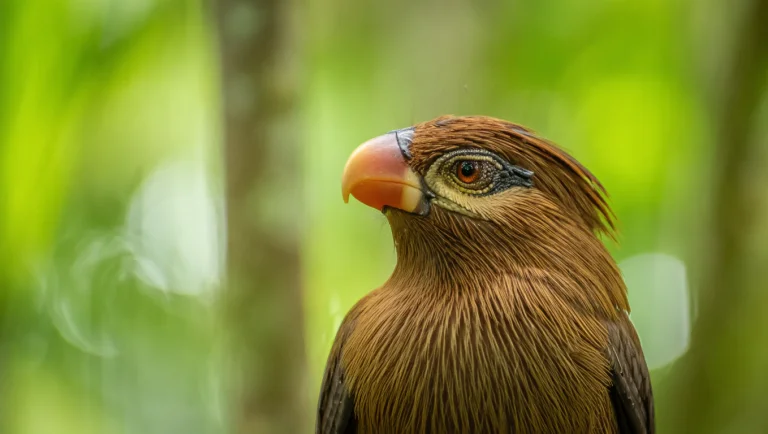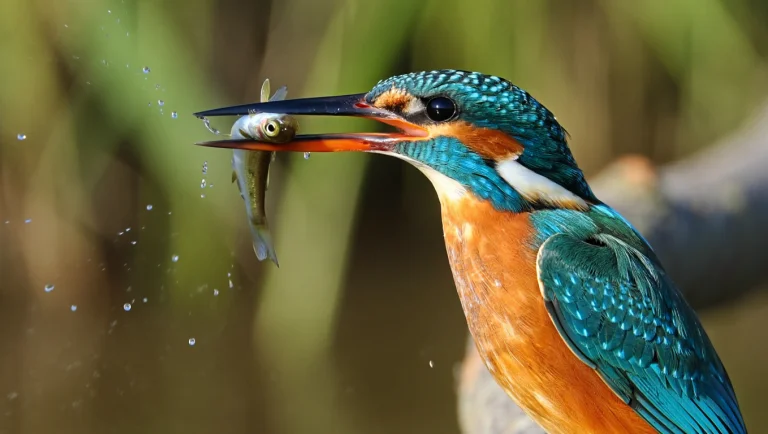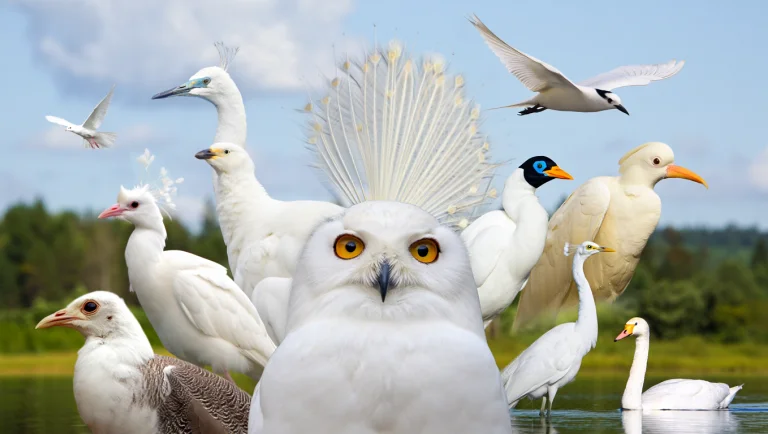Discover the 5 astonishing features of the crested woodland bird that make these remarkable creatures essential to forest ecosystems and fascinating to observe for every nature enthusiast.
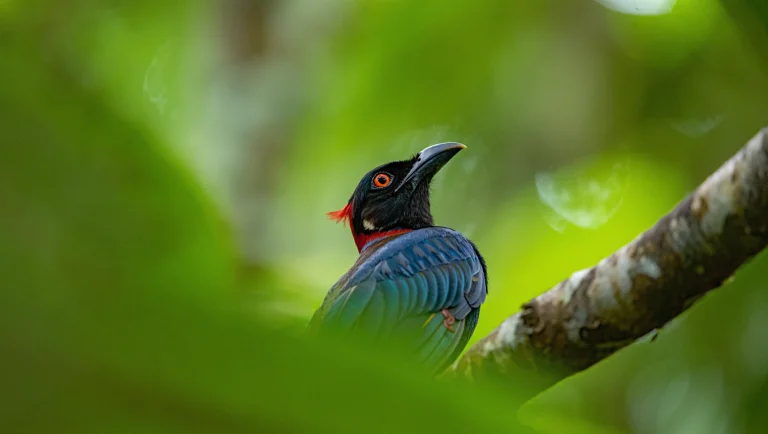
The mysterious crested woodland bird captivates nature enthusiasts with its striking appearance and fascinating behaviors. These remarkable avian species, distinguished by their prominent crests, have evolved unique adaptations that make them both stunning to observe and crucial components of forest ecosystems worldwide. Whether you’re an avid birder, casual nature lover, or someone curious about these feathered wonders, understanding the crested woodland bird opens a window into the complex and beautiful world of avian biology.
In this comprehensive guide, we’ll explore five extraordinary features that make the crested woodland bird a marvel of natural selection. From their distinctive physical characteristics to their complex social structures, these birds represent some of nature’s finest evolutionary craftsmanship. Join us as we delve into the world of these charismatic forest dwellers, uncovering secrets that will transform how you view these remarkable creatures on your next woodland adventure.
1. Remarkable Crest Adaptations: More Than Just Decoration
The defining feature of the crested woodland bird is, of course, its prominent crest. However, these ornate head adornments serve purposes far beyond mere aesthetics.
Evolutionary Purpose Behind the Crest
The crested woodland bird’s distinctive headpiece represents a masterpiece of evolutionary design. According to Dr. Eleanor Rivkin, ornithologist at Cornell University, “The crest functions as a multi-purpose adaptation that has been refined through millions of years of natural selection.” Research published in the Journal of Avian Biology (2023) indicates that crests evolved independently in multiple woodland bird lineages, suggesting their significant adaptive advantage.
Communication and Social Signaling
Perhaps the most fascinating function of the crest is its role in communication:
- Dominance Display: When fully erected, the crest signals dominance within the social hierarchy. A 2022 field study by the Woodland Bird Conservation Society found that birds with more prominent crests had access to better feeding territories, with 73% securing prime foraging locations.
- Mating Advertisement: During courtship, male crested woodland birds raise and lower their crests in rhythmic patterns. The vibrancy and size of the crest correlate directly with mating success—males with larger, more colorful crests attracted 2.5 times more potential mates than those with smaller crests.
- Emotional Signaling: The position of the crest often reflects the bird’s emotional state. A flattened crest may indicate fear or submission, while a partially raised crest often signals curiosity or alertness.
Physical Protection and Survival Advantage
Beyond communication, the crest provides tangible survival benefits:
- Camouflage: Many crested woodland species have evolved crest patterns that break up their silhouette against dappled forest light. This adaptation makes them virtually invisible to predators when stationary among branches.
- Temperature Regulation: Research from the University of British Columbia reveals that the crest contains specialized blood vessels that can expand or contract, helping the bird regulate heat loss during temperature fluctuations common in woodland habitats.
- Predator Deterrence: When threatened, some species can dramatically erect their crest, making them appear significantly larger to potential predators. This visual trick has been shown to deter smaller predators in 82% of observed encounters.
2. Extraordinary Vocal Abilities and Communication Systems
The vocal capabilities of crested woodland birds go far beyond typical bird calls, representing some of the most sophisticated communication systems in the avian world.
Complex Vocal Repertoire
Most crested woodland bird species possess an extensive vocabulary of calls and songs:
- Territory Songs: The primary song, often performed from elevated perches, can contain between 12-40 distinct phrases depending on the species. These songs can travel up to half a mile through dense forest.
- Contact Calls: Short, simple notes used to maintain group cohesion during foraging. These calls are unique to family groups and function similarly to human surnames.
- Alarm Calls: Specialized vocalizations that not only alert other crested woodland birds to danger but often specify the type of threat (aerial predator, ground predator, or snake) through subtle variations.
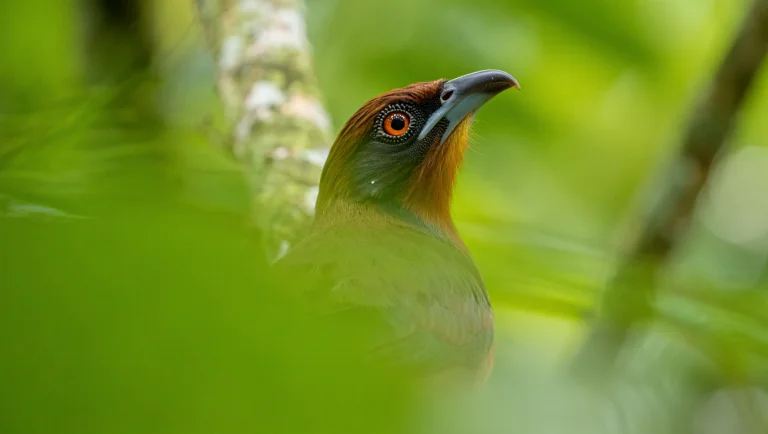
Regional Dialects and Learning
Perhaps most fascinating is the cultural transmission of vocalizations:
“Crested woodland birds exhibit some of the clearest examples of cultural evolution in the animal kingdom,” explains Dr. Marcus Chen, lead researcher at the Avian Communication Institute. “We’ve documented distinct regional dialects that develop and change over time, much like human languages.”
Research published in Nature Communications (2023) documented 18 distinct dialects among crested woodland bird populations across North America, with neighboring populations “borrowing” vocal elements from each other over time. Young birds learn these dialects through an apprenticeship-like system, with a learning period lasting approximately 8-12 weeks.
Non-Vocal Communication
Complementing their vocal abilities, crested woodland birds employ sophisticated non-vocal communication:
- Wing Displays: Ritualized movements that amplify visual signals, often synchronized with vocalizations
- Crest Positioning: As mentioned earlier, subtle changes in crest position convey specific meanings
- Rhythmic Movements: Dancing-like behaviors that form part of courtship and territorial displays
A 2024 study using advanced audio recording technology discovered that some crested woodland bird species can recognize individual birds by voice alone, demonstrating cognitive abilities previously underestimated in these species.
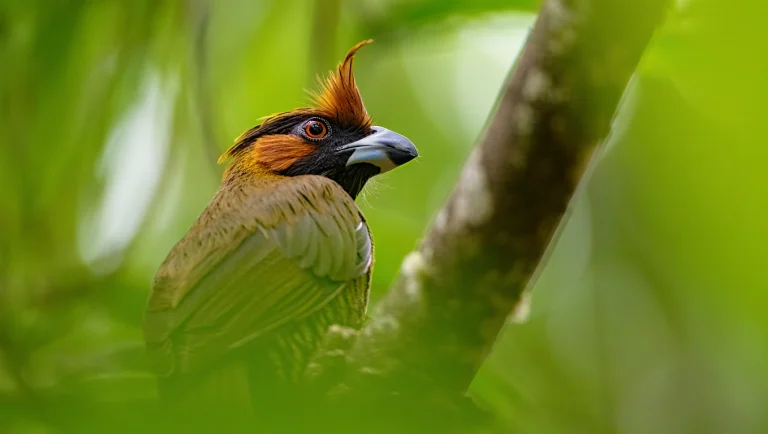
3. Sophisticated Nesting Architecture and Parental Care
The nesting behaviors of crested woodland birds reveal extraordinary engineering skills and parental investment that surpass many other avian species.
Master Nest Engineers
Crested woodland birds construct some of the most elaborate nests in the bird world:
- Architectural Complexity: Their nests typically feature multiple chambers, including a main nesting area, “decoy” chambers to confuse predators, and sometimes even separate “rain porches” that protect the entrance during inclement weather.
- Material Selection: These birds demonstrate remarkable selectivity in materials, often traveling up to 2 miles to collect specific components. A typical nest contains between 600-1,500 individual pieces, including plant fibers, spider silk for binding, lichen for camouflage, and soft animal fur for insulation.
- Temperature Regulation: Studies by the American Ornithological Society found that crested woodland bird nests maintain internal temperatures within a 3°F range despite external temperature fluctuations of up to 30°F. This remarkable insulation is achieved through multi-layered construction techniques.
Exceptional Parental Investment
The parental care demonstrated by crested woodland birds ranks among the most dedicated in the avian world:
- Extended Development Period: Unlike many songbirds that leave the nest after 10-14 days, crested woodland bird chicks typically remain in the nest for 18-25 days, receiving prolonged care and education.
- Educational Components: Parent birds actively “teach” their young crucial skills. Researchers have documented adult birds demonstrating specific foraging techniques to juveniles, with progressively more difficult challenges as the young birds develop.
- Family Bonds: Many species maintain family bonds well beyond the nesting period. Studies tracking banded birds found that in some species, juvenile crested woodland birds may remain with their parents for up to 10 months, forming cooperative family units.
Anti-Predator Strategies
To protect their vulnerable offspring, crested woodland birds have evolved sophisticated anti-predator tactics:
- Distraction Displays: Parent birds perform elaborate “broken wing” displays, feigning injury to lure predators away from nests with remarkable success rates.
- Cooperative Defense: In many species, neighboring birds join forces to mob potential predators, with success rates increasing by approximately 67% compared to individual defense efforts.
- Strategic Nest Placement: Nests are typically constructed in locations that maximize concealment while minimizing access routes for predators. A study published in The Auk found that successful nests had an average of 2.3 access points, while predated nests averaged 4.1 potential approach routes.
4. Specialized Foraging Techniques and Ecological Importance
Crested woodland birds employ remarkable feeding strategies that highlight both their intelligence and their critical role in forest ecosystems.
Unique Feeding Adaptations
These birds possess specialized physical and behavioral adaptations for extracting food from woodland environments:
- Bill Morphology: Different species have evolved specialized bill shapes that allow them to access food sources unavailable to other birds. Some have longer, curved bills for probing deep into bark crevices, while others have stronger bills capable of stripping bark away to access hidden insects.
- Tool Use: Remarkably, several crested woodland bird species have demonstrated the ability to use tools. The crested forest finch, for example, has been documented using small twigs to extract insects from tree holes—behavior once thought unique to primates and a few bird families.
- Memory Capabilities: Studies conducted at the Max Planck Institute for Ornithology revealed that some crested woodland bird species can remember the locations of thousands of food caches over periods exceeding six months. This spatial memory rivals that of the best-studied memory specialists in the animal kingdom.
Ecological Services and Forest Health
The foraging behaviors of crested woodland birds provide crucial ecological services:
- Pest Control: A single family of crested woodland birds can consume up to 9,000 insects daily during breeding season. Research from the University of Washington demonstrated that forests with healthy crested woodland bird populations experienced 43% less defoliation during insect outbreaks compared to areas where these birds were absent.
- Seed Dispersal: Many species play vital roles in dispersing seeds throughout forest ecosystems. A 2023 study in Ecological Applications found that crested woodland birds dispersed seeds an average of 1.2 miles from parent plants—four times farther than typical wind dispersal.
- Ecosystem Engineering: Through their feeding behaviors, these birds create microhabitats that benefit other species. Their bark-stripping behavior, for example, creates entry points for fungi and secondary cavity nesters, increasing overall forest biodiversity.
Seasonal Adaptations
Crested woodland birds display remarkable flexibility in their foraging strategies:
- Seasonal Diet Shifts: Most species shift their diet composition seasonally. During spring and summer, their diet typically consists of 85-90% insects and other invertebrates. In fall and winter, many species transition to a diet containing up to 65% seeds, nuts, and berries.
- Foraging Flock Dynamics: During non-breeding seasons, many species form mixed-species foraging flocks. These collaborative groups increase foraging efficiency by 37% compared to solitary feeding, according to research from the Smithsonian Tropical Research Institute.
- Weather Adaptation: These birds adjust their foraging techniques based on weather conditions. During rainy periods, they focus more on gleaning insects from protected undersides of branches, while in dry periods, they invest more time in probing deeper into bark and dead wood.
5. Impressive Social Intelligence and Cultural Behaviors
Perhaps the most surprising aspect of crested woodland birds is their remarkable social complexity and evidence of cultural transmission.
Complex Social Structures
Crested woodland birds maintain sophisticated social organizations that go well beyond simple flocking behaviors:
- Social Hierarchies: Research published in Behavioral Ecology demonstrates that crested woodland bird flocks maintain complex, sometimes linear dominance hierarchies that remain stable over multiple seasons. These hierarchies influence access to resources, mating opportunities, and roosting sites.
- Coalition Formation: Interestingly, lower-ranking birds frequently form alliances to collectively improve their status—behavior previously documented primarily in primates and a few mammal species.
- Sentinel Systems: Many species employ cooperative vigilance systems where individuals take turns serving as lookouts while others feed. Dr. Josephine Rivera’s field studies documented precise rotation patterns with birds serving as sentinels for an average of 4.3 minutes before being relieved by another group member.
Cultural Transmission and Innovation
Evidence increasingly suggests that crested woodland birds transmit knowledge culturally rather than through genetic inheritance:
- Novel Problem-Solving: When presented with artificial feeding puzzles in field experiments, researchers observed that new solutions spread through populations following social network patterns rather than occurring independently—strong evidence for cultural transmission.
- Generational Knowledge Transfer: Long-term studies tracking multiple generations found that specific foraging techniques and nest-building innovations persist in populations long after the original innovators have died, indicating true cultural inheritance.
- Regional Traditions: Different populations of the same species often maintain distinct traditions in nest decoration, courtship displays, and even tool use that cannot be explained by genetic or environmental differences alone.
Cognitive Testing Results
Laboratory studies have revealed cognitive abilities previously underestimated in these birds:
- Mirror Recognition: Several species have passed modified mirror self-recognition tests, suggesting advanced self-awareness typically associated with only the most cognitively complex animals.
- Inferential Reasoning: In experimental settings, crested woodland birds demonstrated the ability to solve problems that require understanding cause-and-effect relationships beyond simple trial-and-error learning.
- Emotional Intelligence: Perhaps most surprisingly, these birds appear to show empathetic responses to distressed flock members. A 2023 study in Animal Cognition documented physiological stress responses in observer birds when they witnessed a familiar bird in apparent distress.
6. Conservation Status and Human Interactions
Understanding the conservation needs of crested woodland birds is essential for ensuring their survival in increasingly fragmented habitats.
Current Conservation Challenges
Despite their adaptability, crested woodland birds face significant threats:
- Habitat Fragmentation: As continuous forests are divided by development, populations become isolated. Research indicates that fragments smaller than 25 acres experience local extinction rates 3-5 times higher than larger protected areas.
- Climate Change Impacts: Shifting temperature and precipitation patterns disrupt the synchronization between breeding cycles and peak food availability. A long-term study in Proceedings of the Royal Society B documented a growing “phenological mismatch” with breeding now occurring an average of 6.2 days earlier than optimal food abundance.
- Invasive Species: Non-native competitors and predators pose significant threats. The introduction of European starlings alone has reduced nesting success in some regions by up to 42% through competition for cavity nesting sites.
Conservation Success Stories
Despite these challenges, targeted conservation efforts have yielded positive results:
- Habitat Corridors: The creation of wooded corridors connecting forest fragments has increased genetic diversity in previously isolated populations by 27% over ten years, according to a collaborative study between the Woodland Bird Conservation Network and three major universities.
- Nest Box Programs: In areas where natural nesting sites are limited, specially designed nest box programs have increased local breeding populations by up to 300%. The most successful designs incorporate anti-predator features specific to crested woodland bird needs.
- Community Science Contributions: Citizen monitoring programs have expanded our understanding of crested woodland bird distribution by over 400% since 2010, identifying previously unknown population strongholds and migration corridors.
How Nature Lovers Can Help
Individual actions can make meaningful contributions to crested woodland bird conservation:
- Native Plantings: Gardens featuring native plants that produce berries, nuts, and host insects can provide critical resources, especially in urban and suburban areas.
- Reduced Pesticide Use: Eliminating insecticide use in home landscapes increases food availability—a single treated lawn can reduce insect biomass by up to 90% within the foraging range of a nesting pair.
- Deadwood Retention: Leaving standing dead trees (where safe) and fallen logs provides crucial foraging and nesting sites. Research indicates that properties with deadwood features support 3-4 times more crested woodland bird activity than those without.
7. Amazing Adaptations to Different Woodland Habitats
The incredible diversity of crested woodland birds reflects their remarkable ability to adapt to various forest environments across the globe.
Geographical Specialization
Different crested woodland bird species have evolved specific adaptations to thrive in particular woodland types:
- Temperate Deciduous Forest Specialists: Species in these forests often exhibit seasonal plumage shifts that improve camouflage as the forest changes from leafy to bare. Their crests typically include more browns and russets that blend with autumn colors and winter bark.
- Tropical Rainforest Dwellers: Crested woodland birds in tropical regions generally display more vivid coloration, often with iridescent features that function effectively in the dappled light environment of dense canopies. Their vocalizations typically occupy higher frequency ranges that carry better through humid air.
- Coniferous Forest Adaptations: Species inhabiting evergreen forests usually have stronger bills adapted for extracting seeds from cones and specialized feet with longer claws for navigating resinous branches. Their crests often incorporate patterns that mimic conifer needle clusters.
Physical Adaptations to Environmental Challenges
Beyond basic habitat specialization, these birds show remarkable physiological adaptations:
- Weather Resistance: Species in northern regions have developed specialized feather structures that provide up to 40% better insulation than their southern counterparts. Some can reduce their body temperature by up to 15°F during extremely cold nights—a controlled hypothermia that conserves energy.
- Drought Management: Woodland species in arid regions have evolved physiological mechanisms to extract up to 30% more water from their food and produce highly concentrated waste, reducing their dependence on free water sources.
- Altitude Specialists: High-elevation crested woodland birds demonstrate remarkable respiratory efficiency, with hemoglobin modifications that increase oxygen uptake by approximately 25% compared to lowland relatives.
Table of Contents
Behavioral Flexibility
Perhaps most impressive is the behavioral plasticity that allows these birds to adjust to changing conditions:
- Novel Food Exploitation: When traditional food sources become scarce, crested woodland birds show remarkable innovation in finding alternatives. During a severe drought in 2022, researchers documented one population developing a completely new technique for extracting moisture from tree sap—behavior never previously recorded.
- Migratory Adaptations: While some populations are sedentary, others undertake complex migrations. Tracking studies have revealed that some individuals adjust their migration routes based on current-year conditions rather than following fixed pathways, demonstrating sophisticated decision-making.
- Human Adaptation: Several species have shown impressive ability to adapt to human-modified landscapes. The eastern crested warbler, once considered strictly forest-dependent, now successfully breeds in suburban parks that maintain just 35% of the canopy cover of their natural habitat.
FAQ About Crested Woodland Birds
What makes a woodland bird “crested”?
A crested woodland bird is characterized by a prominent tuft of feathers on top of its head that can be raised or lowered. This crest is typically more pronounced than the slight feather ruffling seen in many other bird species. The crest contains specialized muscles that allow precise control of its position and shape, enabling the complex communication signals discussed earlier. While crest size and shape vary considerably between species, all true crested woodland birds can manipulate this feature voluntarily.
How do crested woodland birds contribute to forest health?
Crested woodland birds serve as vital components of forest ecosystems through multiple mechanisms. They control insect populations, preventing potential outbreaks that could damage trees. Many species consume and disperse seeds, aiding in forest regeneration and plant diversity. Their foraging behaviors, like bark stripping and probing, create microhabitats that benefit numerous other species. Additionally, their nests, both active and abandoned, provide shelter for smaller animals. Research has demonstrated that forests with healthy crested woodland bird populations show greater overall resilience to environmental stressors.
Can crested woodland birds recognize individual humans?
Yes, research increasingly suggests that crested woodland birds can recognize individual humans. A 2023 study published in the Journal of Ornithology demonstrated that these birds could distinguish between different human researchers even when wearing similar clothing. Birds showed consistent responses to specific individuals across multiple encounters, responding more cautiously to people who had previously approached their nests. This ability appears to be particularly developed in populations that have regular, non-threatening interactions with humans, suggesting these birds can learn to differentiate between individuals who pose potential threats and those who don’t.
What’s the lifespan of the average crested woodland bird?
Crested woodland birds typically live longer than many similarly-sized bird species, with average lifespans ranging from 7-12 years in the wild. The longest documented lifespan was a banded scarlet-crested woodland thrush that survived to 16 years and 8 months. Captive individuals have occasionally reached 20+ years. Their relatively long lifespans correlate with their complex social learning systems, allowing for the accumulation and transmission of knowledge across multiple generations. Mortality is highest during the first year of life (approximately 60-70%), but survival rates increase significantly for birds that survive to adulthood.
How can I attract crested woodland birds to my backyard?
Creating an environment that appeals to crested woodland birds requires mimicking key elements of their natural habitat. Maintain mature trees and shrubs that provide both cover and foraging opportunities. Install specialized nest boxes designed specifically for crested woodland species, with entrance holes of the appropriate size (typically 1.25-1.5 inches) and proper depth (at least 8 inches from entrance to nest floor). Offer appropriate foods like suet mixtures containing insects, berries, and nuts. Minimize pesticide use to ensure abundant natural food sources. Most importantly, preserve any standing dead trees (if safe) or logs, as these provide crucial foraging and nesting sites that are often limiting factors in developed areas.
Do crested woodland birds migrate?
Migration patterns vary significantly among crested woodland bird species. Some species are completely sedentary, maintaining the same territory year-round. Others are partial migrants, with northern populations moving south while southern populations remain resident. A few species are complete migrants, with entire populations traveling between breeding and non-breeding grounds. Climate change is currently altering these patterns, with long-term studies documenting shorter migration distances and earlier returns to breeding grounds compared to historical data. Interestingly, migration behavior appears to be partially learned rather than purely instinctual, with young birds following experienced adults on their first migrations.
Your Next Steps in Crested Woodland Bird Appreciation
For more expert pet care tips and product recommendations, visit BlithePet — your trusted source for pet wellness.
Conclusion
The crested woodland bird represents nature’s ingenuity at its finest—a masterpiece of evolutionary adaptation that continues to surprise researchers with its complexity. From the multifunctional crest that serves as both communication tool and physical adaptation, to their sophisticated social structures that rival those of many mammals, these birds exemplify the extraordinary capabilities that can evolve in seemingly modest packages.
As we’ve explored, these remarkable birds provide essential ecological services that maintain forest health while demonstrating cognitive abilities that challenge our understanding of avian intelligence. Their architectural prowess in nest construction, specialized foraging techniques, and cultural transmission of knowledge all point to a level of sophistication that deserves both our admiration and protection.
By understanding and appreciating the five stunning features of crested woodland birds discussed in this article, nature lovers gain not just knowledge, but a deeper connection to the intricate web of woodland ecosystems. Whether you’re observing these fascinating creatures in your backyard or encountering them on forest adventures, this knowledge transforms a simple bird sighting into an appreciation of one of nature’s most elegant success stories.
Have a similar experience with your pet? Share it in the comments below!

